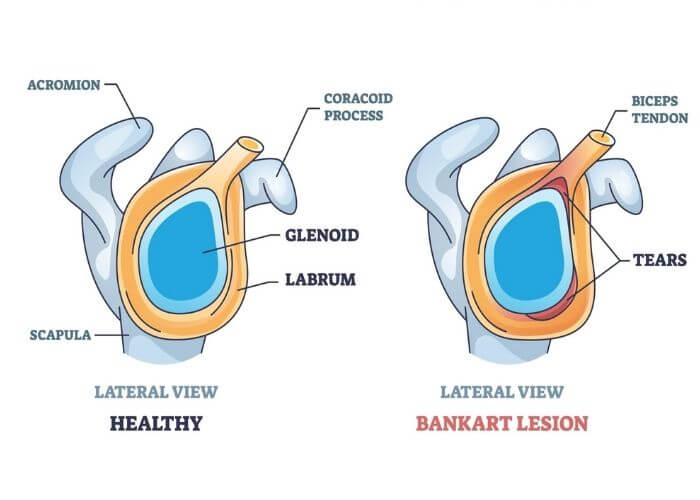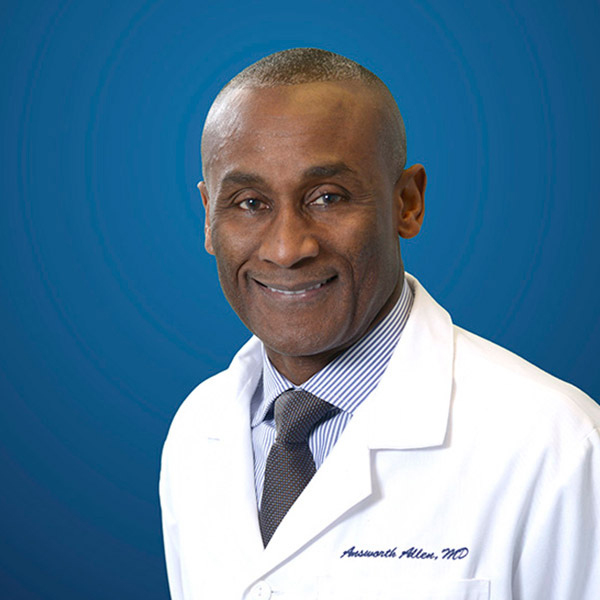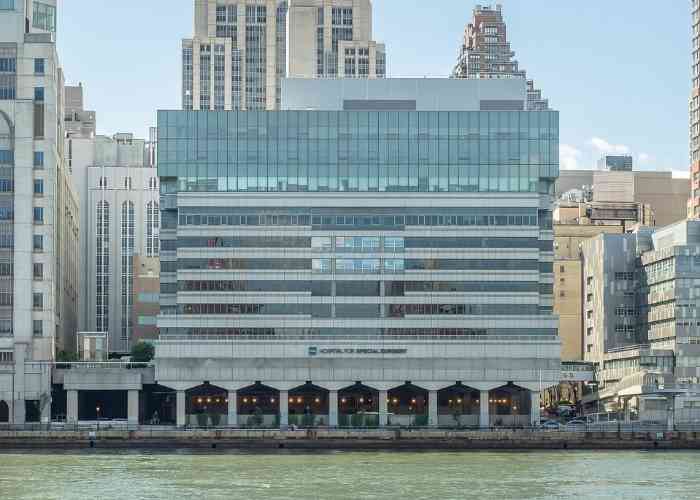What is a Bankart lesion?
The shoulder joint is formed from the head of the humerus (upper arm bone) and the glenoid portion of the scapula (shoulder blade) into a ball-and-socket type of joint. Although this type of joint allows for a wide range of shoulder movement, the soft tissue restraints provide poor stability resulting in the shoulder becoming easily dislocated. Shoulder dislocations are classified into 3 types: posterior dislocation, when the arm slides out of the socket backwards; An inferior dislocation, when the humeral head slides downward out of the joint space; and an anterior dislocation, (which is the most common) when the arm is abducted away from the body and forced forward during the injury. In the event of a forward (anterior) dislocation, damage to the connective tissue surrounding the glenoid labrum can occur and is most often from a sports-related injury. This connective tissue weakens over time and increases the risk for repetitive anterior shoulder dislocations. A Bankart lesion, named for the doctor who first discovered this specific type of tear, is located on the anterior (forward) surface of the glenoid labrum of the scapula and is the result of multiple dislocations or instability episodes.

What is the treatment for a Bankart lesion?
A Bankart repair, also known as capsulolabral reconstruction or anterior stabilization, is the surgical treatment for recurrent anterior shoulder dislocations. The goal of a Bankart repair is to restabilize the shoulder joint to prevent future dislocations. Dr. Answorth A. Allen, orthopedic shoulder surgeon, treats patients in Manhattan, New York City, Westchester, Long Island and surrounding areas who have suffered multiple shoulder dislocations and are in need of a Bankart repair.
What is a capsulolabral reconstruction or Bankart repair?
A Bankart repair can be performed arthroscopically utilizing a small camera called an arthroscope, and specialized surgical instruments to manipulate the stretched anterior shoulder capsule and reattach the damaged portion of the labrum. To accomplish this surgical repair, Dr. Allen uses special surgical anchors that are secured within the bone and sutures the labrum and anterior shoulder capsule into place.
Open surgery may occasionally be needed to repair a Bankart lesion for patients with an unsuccessful shoulder reduction or those that have suffered bone loss from chronic dislocations. Dr. Allen may prefer this surgical approach over an arthroscopic surgical repair as a slightly larger incision is used to better visualize the entire shoulder joint. This open surgical technique employs a tendon graft, either from the patient (autograft) or a donor (allograft), to create new ligaments to hold the shoulder in place.
What is the recovery period like after a Bankart repair?
The recovery period after a Bankart repair is dependent upon the surgical approach utilized by Dr. Allen. After a successful Bankart repair, most patients can expect a full recovery in 6 months with a year or more of continued improvement in shoulder range of motion and strength. In general, patients in New York can expect the following:
- Immediately following the procedure, the shoulder joint will be immobilized by a sling and remain immobile for 6 weeks.
- Management of pain with the application of ice packs and non-steroidal anti-inflammatory medications
- Approximately 4 weeks following surgery, Dr. Allen will recommend beginning a physical rehabilitation program that is focused on improving shoulder range of motion and strength. Participation and completion of this physical rehabilitation program is the key to a patient’s shoulder stabilization success following a Bankart repair.
Bankart Lesion Surgeon

Have you experienced multiple shoulder dislocations? If so, you may be at an increased risk of sustaining a Bankart lesion. Bankart lesions are tears to the labrum of the scapula and can cause worsening instability and pain. This injury can be treated with an arthroscopic procedure called a Bankart repair. Doctor Answorth Allen performs Bankart repairs for patients in Manhattan, New York City, Westchester, Long Island and surrounding areas who have experienced instability. Contact Dr. Allen’s team today!






